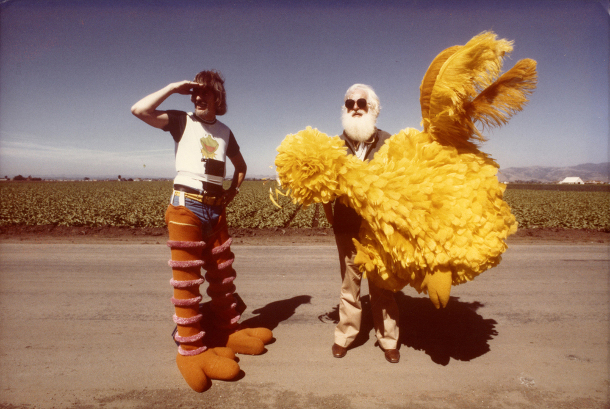
Cast: Shufang Chen, Lawrence Ko, Tianlu Li
Director: Hou Hsiao-hsien
Country: Taiwan
Genre: Drama | Romance
Official Trailer: Here
Editor’s Notes: The following review of Dust in the Wind is part of our coverage for TIFF’s A Century of Chinese Cinema which runs from June 5th to August 11th at TIFF Bell Lightbox. For more information of this unprecedented film series visit http://tiff.net/century and follow TIFF on Twitter at @TIFF_NET.
At the heart of Dust in the Wind, like so many Chinese films, lies a humming tension between old and new. The ways of modernization and urbanization glitter with promise for the Taiwanese youth at the center of Hou Hsiao-Hsien, but they leave in their wake the destruction of their family units and the old traditions, and in the process end up wounding themselves as well. That the director and cast do such a good job with another common element of Chinese cinema - the layering of subtext under a surface calm - makes the film’s ideas and reflections resonate all the more.
At the heart of Dust in the Wind, like so many Chinese films, lies a humming tension between old and new. The ways of modernization and urbanization glitter with promise for the Taiwanese youth at the center of Hou Hsiao-Hsien…
Dust in the Wind follows two teenagers, Wan and Huen. Ostensibly a couple, they are separated when Wan goes leaves their village to look for work in Taipei. He gets a job at a printing factory and lives in a makeshift room behind a movie theater. Huen follows him, working as a seamstress, but displeases Wan by (as he sees it) too quickly adapting to the ways of the big city. Eventually Wan receives his draft notice, and goes to serve three years in the Taiwanese army. Though at first they correspond regularly, the couple drifts apart in his absence, and Huen ends up marrying another man.

This fairly sparse plot (combined with a nearly two hour running time) means that the film devotes plenty of time to developing its characters and themes. The two characters shuttle back and forth from the city to the village, so along the way others creep into the story. Wan’s family comes into focus, as the film shows his devoted mother, his lazy father, and a lighting-in-a-bottle grandfather who bemoans the changing of the times. In the city, their family becomes more piecemeal, a tattered collection of young people who are similarly alone.
Hou Hsiao-Hsien masterfully contrasts city and country life. He provides ample footage of the achingly beautiful Taiwanese countryside, including some very clever tracking shots done off the backs of trains. In the city he manages to capture simultaneously the crowded, busy nature of urban life and the feeling of isolation that often accompanies it. What makes this film special is the delicate balance it walks between its two locales. It would be easy to come down firmly on one side or the other, showing the city as a hellhole and the country as an idyllic escape, or vice versa. But Hsiao-Hsien seems intent on capturing the full picture, on showing that life everywhere remains fraught with problems. Money is tight all over: Wan barely scrapes by in the city, while a mine strike makes daily existence in the village a struggle. Relationship drama in the city coincides with family turmoil in the village.
This description makes the film sound dreary and somber. Well, it is titled Dust in the Wind, after all. Yet there is a current of humor streaking under the seriousness.
This description makes the film sound dreary and somber. Well, it is titled Dust in the Wind, after all. Yet there is a current of humor streaking under the seriousness. Little moments of life poke through - as when the grandfather, during a blackout, mistakenly lights a firecracker instead of a candle. Again, Hsiao-Hsien does not plant his feet firmly on the side of nihilism. His Taiwan is not one where life is unendingly bleak. Rather he wants to depict life realistically, with real troubles but also real joys. The look, dialogue, and acting of the film make it feel very grounded in reality. The actors tend to underact, letting the silence between them say more than shouted words ever could. In particular, Xin Shufen does a marvelous job as Huen, the much put upon girl. She remains devoted to Wan even when it seems like he does not want her around, and meets his harshness with kind service and a muted pain. This makes her final choice to leave Wan all the more devastating.
The film ends with a curious scene. Wan returns to the village after his military service has ended, still mourning over Huen. He peeks in at his sleeping mother, then finds his grandfather in the field harvesting potatoes. They talk, and his grandfather keeps returning to how hard it is to raise potatoes, how unpredictable it can be. Though odd, the scene provides insight into the film. Life, it says, is hard and unpredictable, but we keep hacking away at it, hoping to get something in return for our toil.
[notification type=”star”]85/100 ~ GREAT. Dust in the Wind is a careful, intentional piece of filmmaking. It features lush visuals and rich thematic material bubbling below the exterior. Perhaps a tad too slow paced, it is nevertheless a treasure trove for those willing to take the time to contemplate it.[/notification]



